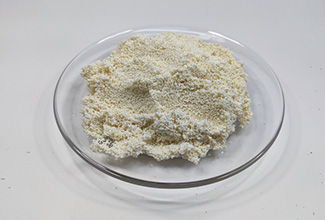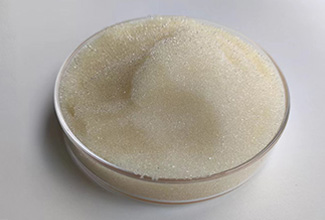What causes the decrease in resin exchange capacity?
During ion exchange, various factors can lead to a decline in resin exchange capacity and overall performance. This can result in system malfunctions and compromised effluent quality. In such cases, resin replacement or regeneration becomes necessary. Here, we explore the key causes of reduced resin performance and corresponding treatment methods.
1. Resin Degradation:
Resin degradation refers to the irreversible deactivation of the exchange sites due to factors like:
- Resin Breakage: Physical breakdown of the resin beads reduces available exchange surfaces.
- Oxidative Expansion: Irreversible swelling of the resin structure caused by oxidation.
- Loss of Active Groups: Breakdown or detachment of functional groups responsible for ion exchange.
Unfortunately, degradation necessitates replacing the resin with a fresh batch to restore system functionality. Improper operational practices can accelerate this degradation process.
2. Resin Pollution (Poisoning):
Resin pollution, also known as poisoning, can occur in three main scenarios:
-
Inorganic Pollution:
- Metal ions (Cu, Fe, Mn, Ca, Mg, Al) form precipitates (hydroxides) in an alkaline environment, clogging resin pores.
- High silica content in water leads to silica gel formation, hindering ion exchange.
- Heavy metal ions can oxidize the resin, altering its structure and reducing exchange capacity.
-
Organic Matter Pollution:
- This primarily affects anion exchange resins.
- Negatively charged organic molecules (humic acid, fulvic acid) from decomposing organic matter bind tightly to the resin, blocking exchange sites.
- These complex molecules can form entangled structures within the resin pores, further reducing exchange capacity.
- The "bottleneck effect" refers to the difficulty of removing such tightly bound organic matter from the resin.
- Additionally, degradation products from cation resins (e.g., diethyl chloride) can contaminate anion resins.
-
Microbial Contamination:
- Improper storage or prolonged regeneration delays can foster the growth of algae and microorganisms on the resin surface.
- These microbes utilize nitrates and amines present in the resin as nutrients, leading to rapid proliferation.
- Microbial activity not only reduces water quality but also damages the resin structure, hindering its exchange capacity.
To minimize resin pollution, effective pretreatment of raw water before the exchange column is crucial.
-
 DA860 Acrylic Anion Exchange Adsorbent ResinAppearance: Milky white to Light yellow opaque sphericalIonic form:Cl-Volume complete exchange capacity(mmol/ml):≥1.6
DA860 Acrylic Anion Exchange Adsorbent ResinAppearance: Milky white to Light yellow opaque sphericalIonic form:Cl-Volume complete exchange capacity(mmol/ml):≥1.6 -
 201×2 Strong Base Anion Exchange resin(Gel Type)Appearance: Light yellow to gold yellow transparency sphericity particles.The degree of crosslinking : 2%.Ionic form: Cl-
201×2 Strong Base Anion Exchange resin(Gel Type)Appearance: Light yellow to gold yellow transparency sphericity particles.The degree of crosslinking : 2%.Ionic form: Cl- -
 D301 Macroporous Weak Base Anion Exchange ResinAppearance: Milky white or light gray opaque spherical particles.Ionic form: Free baseVolume complete exchange capacity(mmol/ml):≥1.3
D301 Macroporous Weak Base Anion Exchange ResinAppearance: Milky white or light gray opaque spherical particles.Ionic form: Free baseVolume complete exchange capacity(mmol/ml):≥1.3

